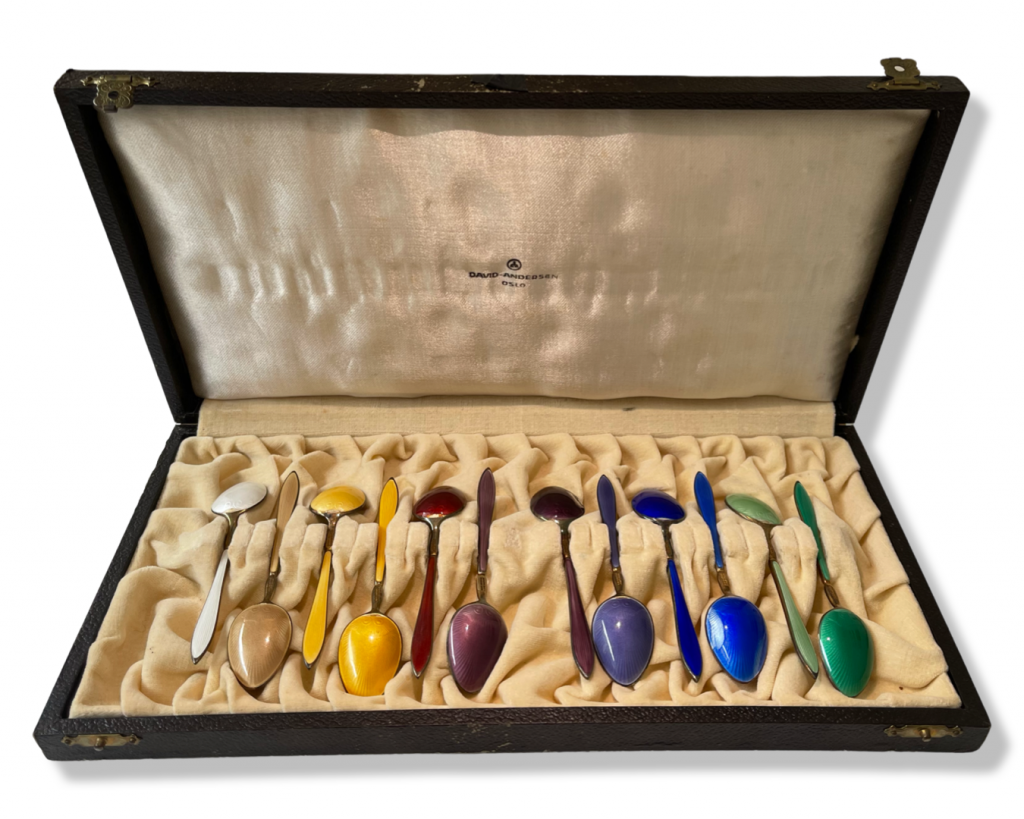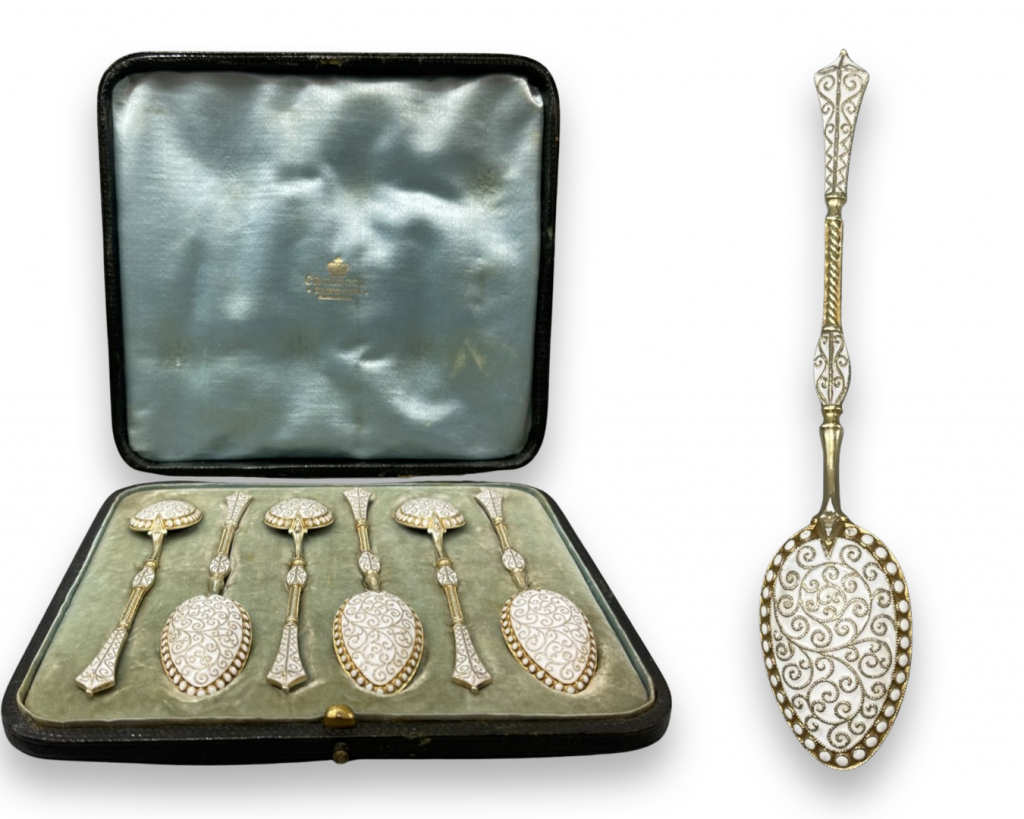What can we tell you about enamel jewellery and silverware? Colourful, versatile and adaptable are just a few of its many qualities. Enamel compliments almost every single style of jewellery, from the delicate and intricate to the more vibrant, bold pieces, designed to make an impact.
Historically, enamelling has been primarily used to capture the colour and vibrancy of gemstones without the labour and often expensive process of mining, cutting and setting. Enamel jewellery has been around since the 13th century B.C.E when Mycenaean goldsmiths inlaid enamels into gold rings.
As of today, many jewellers choose to incorporate enamel into their pieces for its uniqueness, versatility and vibrancy.
There are varying processing techniques when using enamel, most of which will result in different appearances, for example the historically renowned technique known as “plique-a-jour” will give a more translucent appearance as it allows light to enter from behind the enamel.
There are many jewellery designers who specialise in enamel, most notably, David Andersen. Born in Norway in 1843, David Andersen is one of Scandinavias (if not the worlds) most renowned enamel jewellery and silverware designers. From humble beginnings starting out as an apprentice in 1859 and then going on to start up his own goldsmith workshop in Christiania (now known as Oslo) in 1876. He went on to establish a company revered the world over for its now-famous enamel jewellery and silverware. Still very much sought after to this day, the David Andersen brand continues to lead the way in Nordic jewellery design.
We were lucky enough to have a set of 12 enamel spoons designed by David Andersen in our auction on the 25th of June as lot 71 alongside a handful of other enamel pieces.

The spoons feature an enamelling technique called Guilloché . Guilloché is a highly decorative technique used in metalwork, which integrates mechanical engraving and translucent enamels to create a surface embellishment. Guilloché enamelling can only be achieved with specialised machinery known as ornamental lathes which were introduced in the 16th century. The set made £150 at hammer with an estimate of £100-150.
Accompanying the spoons in the auction is a handful of other enamel items including a set of six beautiful Norwegian silver gilt and enamel spoons in their original box as lot 72. This lot exceeded its estimates of £80-120 achieving a fabulous hammer price of £190.


